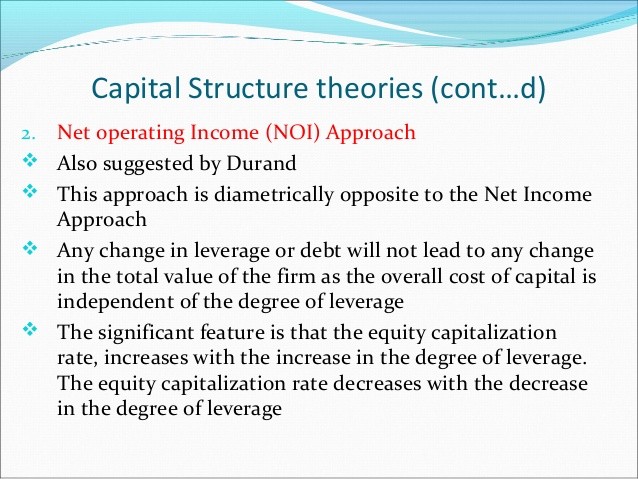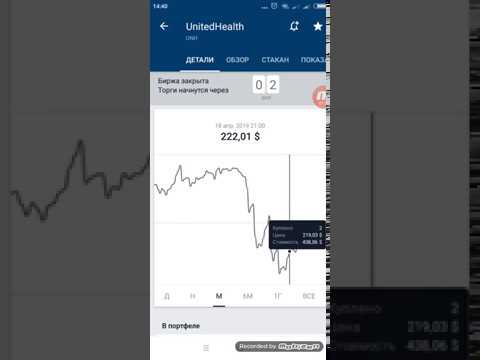How to Calculate And Interpret The Current Ratio Bench Accounting
Contents:


Pete Rathburn is a copy editor and fact-checker with expertise in economics and outstanding checks and over twenty years of experience in the classroom. Bankrate follows a stricteditorial policy, so you can trust that our content is honest and accurate. Our award-winning editors and reporters create honest and accurate content to help you make the right financial decisions.
Current ratio is a popular tool to evaluate short-term solvency position of a business. Short-term solvency refers to the ability of a business to pay its short-term obligations when they become due. Short term obligations are the liabilities payable within a short period of time, usually one year. Use the current ratio and the other ratios listed above to understand your business, and to make informed decisions. Some business owners use Excel for accounting, but you can increase productivity and make better decisions using automation.
The current ratio, also known as the working capital ratio, measures the capability of a business to meet its short-term obligations that are due within a year. The ratio considers the weight of total current assets versus total current liabilities. It indicates the financial health of a company and how it can maximize the liquidity of its current assets to settle debt and payables. The current ratio formula can be used to easily measure a company’s liquidity. Let’s look at some examples of companies with high and low current ratios. You can find these numbers on a company’s balance sheet under total current assets and total current liabilities.
Also, you can get a CT ratio along with the burden resistance value from this calculator. Get instant access to video lessons taught by experienced investment bankers. Learn financial statement modeling, DCF, M&A, LBO, Comps and Excel shortcuts. From Year 1 to Year 4, the current ratio increases from 1.0x to 1.5x.
How to Calculate Your Debt-to-Asset Ratio for 2023 — The Motley Fool
How to Calculate Your Debt-to-Asset Ratio for 2023.
Posted: Fri, 05 Aug 2022 07:00:00 GMT [source]
Maybe, but you may want to dig deeper to find out what’s going on or think twice before you invest. From an investor’s point of view, a https://1investing.in/ of between 1.6 and 2 is healthy, while ratios below 1 or well above 2 might be cause for concern. This document/information does not constitute, and should not be considered a substitute for, legal or financial advice. Each financial situation is different, the advice provided is intended to be general.
How to Calculate the Balance Sheet Current Ratio Using the Formula
The debt-to-equity ratio divides total liabilities by total shareholder equity. This is a useful metric for comparing what a company owes to what it owns. If your business is incorporated, the debt-to-equity ratio is an important measure of the total amount of debt carried by the business vs. the amount invested by the shareholders. In actual practice, the current ratio tends to vary by the type and nature of the business.

Fundamental research analysts extensively use the ratio while valuing a company and measuring a firm’s liquidity. Current Liabilities are short-term obligations intended to be paid off within a year or an accounting period. However, a low current ratio of less than 1 doesn’t necessarily mean the company is bankrupt. This ratio can be helpful for people outside your company who are looking to do business with you.
What Are the Limitations of the Current Ratio?
Our editorial team receives no direct compensation from advertisers, and our content is thoroughly fact-checked to ensure accuracy. So, whether you’re reading an article or a review, you can trust that you’re getting credible and dependable information. While we adhere to stricteditorial integrity, this post may contain references to products from our partners. “Expert verified” means that our Financial Review Board thoroughly evaluated the article for accuracy and clarity.

The quick ratio is commonly used to measure the financial health of companies that count inventory as a large percentage of current assets, such as retail and manufacturing businesses. A primary criticism of the quick ratio is it may overestimate the difficulty of quickly selling inventory at market price. The above analysis reveals that the two companies might actually have different liquidity positions even if both have the same current ratio number.
Interpreting the Current Ratio
Companies with an improving current ratio may be undervalued and in the midst of a turnaround, making them potentially attractive investments. Cash And Cash EquivalentsCash and Cash Equivalents are assets that are short-term and highly liquid investments that can be readily converted into cash and have a low risk of price fluctuation. Cash and paper money, US Treasury bills, undeposited receipts, and Money Market funds are its examples.
The definition of a “good” current ratio also depends on who’s asking. Ratios lower than 1 usually indicate liquidity issues, while ratios over 3 can signal poor management of working capital. A high current ratio, on the other hand, may indicate inefficient use of assets, or a company that’s hanging on to excess cash instead of reinvesting it in growing the business. Here, we’ll go over how to calculate the current ratio and how it compares to some other financial ratios.
We do not include the universe of companies or financial offers that may be available to you. Now that you know the current ratio, you can use it as part of your analysis of the company. The following section explains exactly how to use the current ratio in your analysis. WIP InventoryWIP inventory (Work-in-Progress) are goods which are in different stages of production. WIP inventory includes materials released from the inventory for the process but not yet completed. The accounting system accounts for the semi-finished goods in this category.
For instance, if the current ratio is less than 1, this means that the company’s outstanding debts owed within a year are higher than the current assets the company holds. This is generally not a good sign, as it could mean the company is in danger of becoming delinquent on its payments, which is never good. Keep in mind, though, that the company may simply be awaiting a big influx of cash, whether in the form of a new investment or payment for a big sale of the product it manufactures. The current ratio is a liquidity ratio that measures a company’s ability to cover its short-term obligations with its current assets. The quick ratio does not consider most of a company’s current assets. It may be unfair to discount these resources, as a company may try to efficiently utilize its capital by tying money up in inventory to generate sales.
- This ratio can be helpful for people outside your company who are looking to do business with you.
- For the last step, we’ll divide the current assets by the current liabilities.
- For every dollar in current liabilities, there is $1.18 in current assets, and a current ratio greater than 1.0 generally is good.
- In the case of current liabilities, their value is fixed and they must be repaid.
- Bankrate.com is an independent, advertising-supported publisher and comparison service.
Advertising considerations may impact how and where products appear on this site but do not affect any editorial decisions, such as which products we write about and how we evaluate them. Personal Finance Insider researches a wide array of offers when making recommendations; however, we make no warranty that such information represents all available products or offers in the marketplace. The higher the resulting figure, the more short-term liquidity the company has. With that said, the required inputs can be calculated using the following formulas.
What Is the Balance Sheet Current Ratio Formula?
As an example, let’s say The Widget Firm currently has $1 million in cash and easily convertible assets (e.g., inventory) and $800,000 in debts due in the year (e.g., payroll and taxes). We can plug this information into the formula to find the current ratio. Some may consider the quick ratio better than the current ratio because it is more conservative. The quick ratio demonstrates the immediate amount of money a company has to pay its current bills. The current ratio may overstate a company’s ability to cover short-term liabilities as a company may find difficulty in quickly liquidating all inventory, for example. However, an acceptable range for the current ratio could be 1.2 to 2.
Financial Ratio Analysis: Definition, Types, Examples, and How to Use — Investopedia
Financial Ratio Analysis: Definition, Types, Examples, and How to Use.
Posted: Mon, 27 Mar 2017 13:01:07 GMT [source]
A well-managed business can increase credit sales and keep their accounts receivable balance at a reasonable level. If you can increase the turnover ratio, you’ll collect cash at a faster rate, and the company’s liquidity will improve. The $50,000 current liabilities balance includes accounts payable and the current portion of long-term debt. The current portion refers to principal and interest payments due within one year, and these payments are a form of short-term debt. Below 1 means the company will not be able to pay its debts within the year. When analyzing a company’s liquidity, no single ratio will suffice in every circumstance.
- He holds a Bachelor’s degree from the University of Minnesota and has over fifteen years of experience working with small businesses through his career at three community banks on the US East Coast.
- It is calculated through a simple formula of dividing a company’s total assets by its short-term debts, generally those due within a year.
- In its Q fiscal results, Apple Inc. reported total current assets of $135.4 billion, slightly higher than its total current assets at the end of the last fiscal year of $134.8 billion.
- The higher the ratio, the more likely it’s that a business will be able to meet its short-term obligations.
In the case of current liabilities, their value is fixed and they must be repaid. However, the value of the current assets may fall and they are not fixed like current liabilities. Current ratios are not always a good snapshot of company liquidity because they assume that all inventory and assets can be immediately converted to cash.
They want to calculate the current ratio for the technology company XYZ Ltd which is based in California. The company reports show they have $500,000 in current assets and $1,000,000 in current liabilities. According to Food & Hangout outlet’s balance sheet, current liabilities were $100,000, and current assets were $200,000.

Although the total value of current assets matches, Company B is in a more liquid, solvent position. Current ratio is a measure of a company’s liquidity, or its ability to pay its short-term obligations using its current assets. It’s also a useful ratio for keeping tabs on an organization’s overall financial health. The current ratio formula accurately analyzes a company’s overall financial health. Creditors consider this ratio when determining whether to provide short-term debt to a company. Both assets and liabilities in the current ratio are meant for items that exist within one year from the date of calculation.
For this reason, companies may strive to keep its quick ratio between .1 and .25, though a quick ratio that is too high means a company may be inefficiently holding too much cash. The current ratio may also be easier to calculate based on the format of the balance sheet presented. Less formal reports (i.e. not required by GAAP external reporting rules) may simply report current assets without further breaking down balances. In these situation, it may not be possible to calculate the quick ratio. Both ratios include accounts receivable, but some receivables might not be able to be liquidated very quickly. As a result, even the quick ratio may not give an accurate representation of liquidity if the receivables are not easily collected and converted to cash.